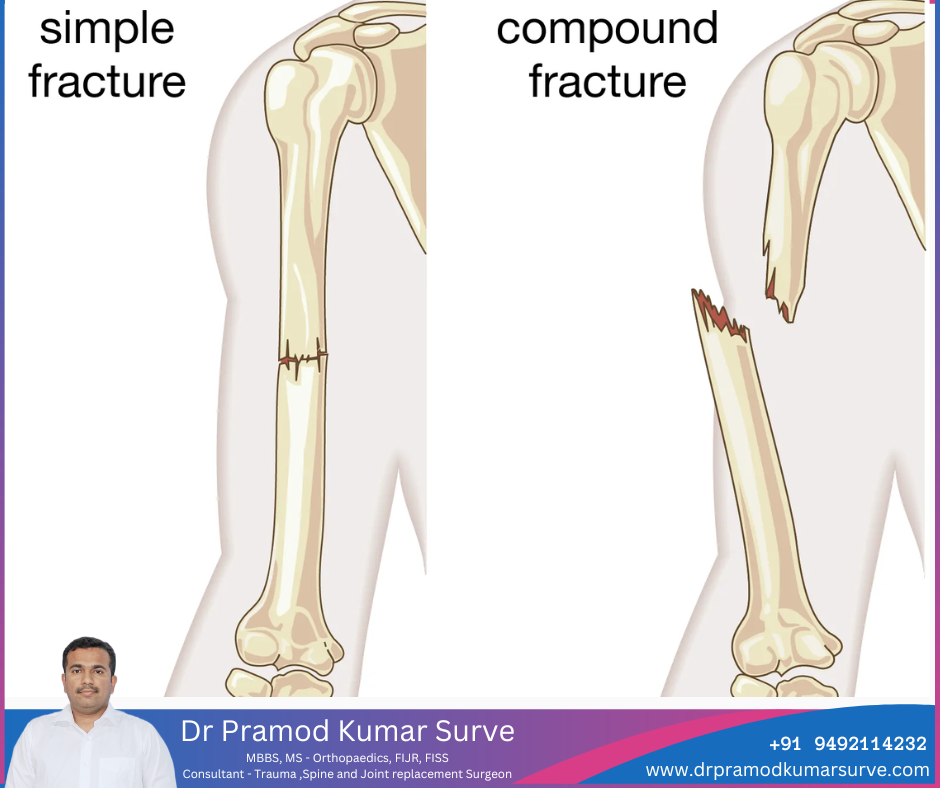Fracture, in pathology, a break in a bone caused by stress. Certain normal and pathological conditions may predispose bones to fracture. Children have relatively weak bones because of incomplete calcification, and older adults, especially women past menopause, develop osteoporosis, a weakening of bone concomitant with aging. Pathological conditions involving the skeleton, most commonly the spread of cancer to bones, may also cause weak bones. In such cases very minor stresses may produce a fracture. Other factors, such as general health, nutrition, and heredity, also have effects on the liability of bones to fracture and their ability to heal.
A fracture is called simple (closed) when the overlying skin is not broken and the bone is not exposed to the air; it is called compound (open) when the bone is exposed. When a bone weakened by disease breaks from a minor stress, it is termed a pathological fracture. An incomplete, or greenstick, fracture occurs when the bone cracks and bends but does not completely break; when the bone does break into separate pieces, the condition is called a complete fracture. A comminuted fracture is one in which the broken ends of the bone are shattered into many pieces. Fractures can also be classified by their configuration on the bone: a transverse fracture is perpendicular to the axis of the bone, while an oblique fracture crosses the bone axis at approximately a 45 degree angle. A spiral fracture, characterized by a helical break, commonly results from a twisting injury.
The most common symptoms of fracture are pain and tenderness at the site, a sensation of grating or grinding with movement, and inability to use the limb or body part supported by the bone. Physical signs include deformity of the part, swelling in the region of the fracture, discoloration of the overlying skin, and abnormal mobility of the bone.
All fractures attempt to heal in the same fashion. The injured bone quickly produces new tissue that extends across the fracture line and joins the broken pieces together. At first this new tissue is soft and puttylike; later, it is bony and hard. While re-forming, the bone must be protected from weight bearing and movement between the fracture ends.
The major complications of fracture include failure to heal, healing in a position that interferes with function, and loss of function despite good healing. Failure to heal is frequently a result of infection. Because healing will not ordinarily take place until an infection is treated, all procedures are aimed at combating infection at the site of injury whenever the possibility exists (as in compound fractures). Failure to heal may also result from severe destruction of bone, disruption of blood supply, or inadequate immobilization of the limb or body part involved; sometimes the cause cannot be determined. Healing is encouraged by cleansing of the fracture site, closure of the overlying broken skin by suture or skin graft, and reimmobilization; bone chips may be used to fill a gap in the fractured bone left by long infection or severe bone destruction. Healing in a poor position, or malunion, may occur when realignment has been improper or when injuries have destroyed large portions of the bone so that deformity must be accepted to salvage it. Sometimes the bone is therapeutically refractured so that proper alignment may be achieved. Injuries to the growth centres of bones in children cause malunion and subsequent growth in a deformed manner.
Fractures in joints present a particularly serious problem because the normally smooth surface of the joint may be destroyed. If the fracture heals in irregular alignment, the joint is likely to be permanently stiff and painful; osteoarthritis is a frequent complication in old age. Unless the surface of the joint can be accurately aligned by manipulation or traction, surgery is necessary. Loss of function may be caused by prolonged immobilization, by heavy scarring after severe injury or infection, or by injury to motor nerves.
